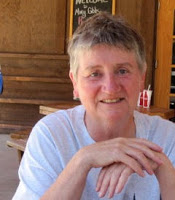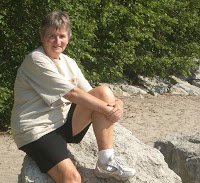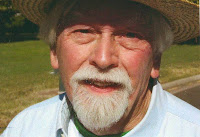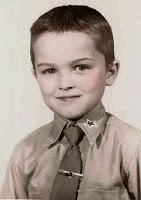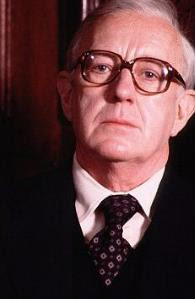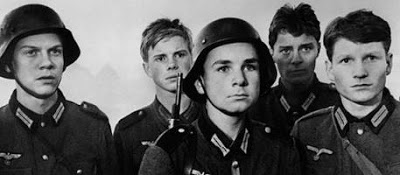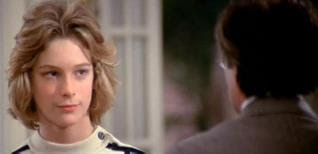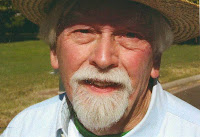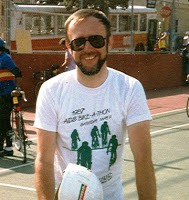really fully-paid-up member of the movie-goers club. In fact I seem to have
had, over my lifetime, something of a love/hate relationship with movies. The
love side has been made up mostly of documentaries, or what they call ‘docudramas’,
which probably makes me something of a dull person to be around; someone who
prefers, for the most part, fact over fiction. Strangely, though, the opposite
is true of books. I rarely read non-fiction books, much preferring to escape
into the land of make-believe.
that very make-believe which has tripped me up. My childhood, in the time and
place that it was, related little to movies. There were cinemas in the towns in
the England of the 1940’s and ’50’s but I and my family and friends had no way
to get to them. There were early TV’s, too, in some places, but non of us had
one. So escape was down to books. And once you are accustomed to using your own
imagination, making the written story and characters look exactly the way you
want them, it’s hard to switch happily to strangers creating the images for
you.
there was the gay thing. Though barely even subliminal, in my youth, it was
there. Reading the book, I could make Jane Eyre’s obsessive love be for a
somewhat androgynous Rochester. I could even, and this requires some strength
of imagination, believe me, picture poor innocent Catherine Earnshaw with a
vaguely unisex Heathcliff. But when, later in life, I saw the Wuthering Heights
movie with that darkly menacing Laurence Olivier, he was so completely
masculine that all fantasy faded. So, I couldn’t really get into movies because
they were so overwhelmingly, 100% at that time, heterosexual. So was
literature, but anyone can take it wherever they want. These days, of course,
we say that ol’ Larry was bisexual, if not homosexual. But either way he’s
completely masculine. Books offer more options than movies.
Storytelling group, who rarely attends now, wrote one day of trying so hard to
hide his infatuation with Tab Hunter. I cannot recall that day’s topic, but I
had written of my attempts to fake an attraction to Tab Hunter. I
bought, in our nearest Woolworth’s, a black and white pin-up photo of him, to
attach to my school desk. Oh the sad irony of it, I thought. Two of us, sixty
years ago, thousands of miles apart, trying so hard to use Tab Hunter – and why
him, I ask myself – to define, or not define, our homosexuality. Thank God,
those days are largely gone.
vast choice of movies, I have favorites of all kinds. But I have still never
fully embraced ‘going to the movies’, except for drive-ins which I always found
to be great fun. For the most part, movies became more attractive to me when
they became readily available from the comfort of my own home and my own couch.
totally fictional, movies, is ‘Cloudburst’, with Olympia Dukakis; the story of
two old lesbians running off to Canada to be married. It is funny and sad: that
perfect combination that creates fiction at it’s best. I also watch ‘The
History Boys’ every time it’s on TV. A wonderful ‘docudrama’, which Betsy and I
had somehow missed until it appeared on TV a couple of weeks ago, is ‘
Freeheld’, the true story of a New Jersey police lieutenant, dying of cancer,
fighting for her registered partner to receive her pension after her death, as
would be the case with a heterosexual couple. There are endless documentaries,
not to mention a full-length movie, about Alan Turing and all he suffered for
his homosexuality. It’s not that all I ever watch is movies, truth or fiction,
depicting the plight of members of the GLBT community; but they exist.
thing to me.
followed the same path. We have been on a long journey, but we have arrived.
And we will never, can never, go back. No matter what rhetoric spews from the
mouths of those filled with hate, from Anita Bryant to our newly anointed
vice-presidential candidate, we cannot, and they cannot, undo what we have
done. I, and all of us here, now know ourselves. Everyone else know us. We tell
our stories and the movies tell our stories; not the stories of us, in this
room, perhaps, individually,
but of us, anywhere and everywhere, collectively. We have travelled from
invisibility to out and proud.
kids today, we could, at least in many schools, each embrace some modern
equivalent of Tab Hunter quite openly; I with indifference and John with
passion. Movies have played a huge part in our journey and we owe a debt of
gratitude to those who conceived them, financed them, produced them, and above
all to the many straight actors who were brave enough to act the part of a gay
or lesbian in the early days, when they put their careers at risk by doing so.
long-time film critic. stated so beautifully,
a box of space and time. Movies are
windows in its walls. They allow us to enter other minds, not simply in the
sense of identifying with the characters, although that is an important part of
it, but by seeing the world as another person sees it.”
perhaps learned not only to see us, to know us, but, just for a short time, to
be us.
the Author
raised in England. After graduation from college there, I moved to the U.S.
and, having discovered Colorado, never left. I have lived in the Denver-Boulder
area since 1965, working for 30-years at IBM. I married, raised four
stepchildren, then got divorced after finally, in my forties, accepting myself
as a lesbian. I have been with my wonderful partner Betsy for thirty-years.
We have been married since 2013.
